RIYADH: The influx of restaurants opening in Riyadh in recent years has transformed the city’s iftar scene, offering a huge array of options for breaking the fast each evening. And with just a few days left in the holy month, it’s the perfect time to explore some of the Saudi capital’s best food venues.
Whether you're in the mood for a traditional Saudi feast, a gourmet international spread, or a fusion of contemporary flavours, Riyadh’s vibrant dining landscape has something for everyone.
Carbone
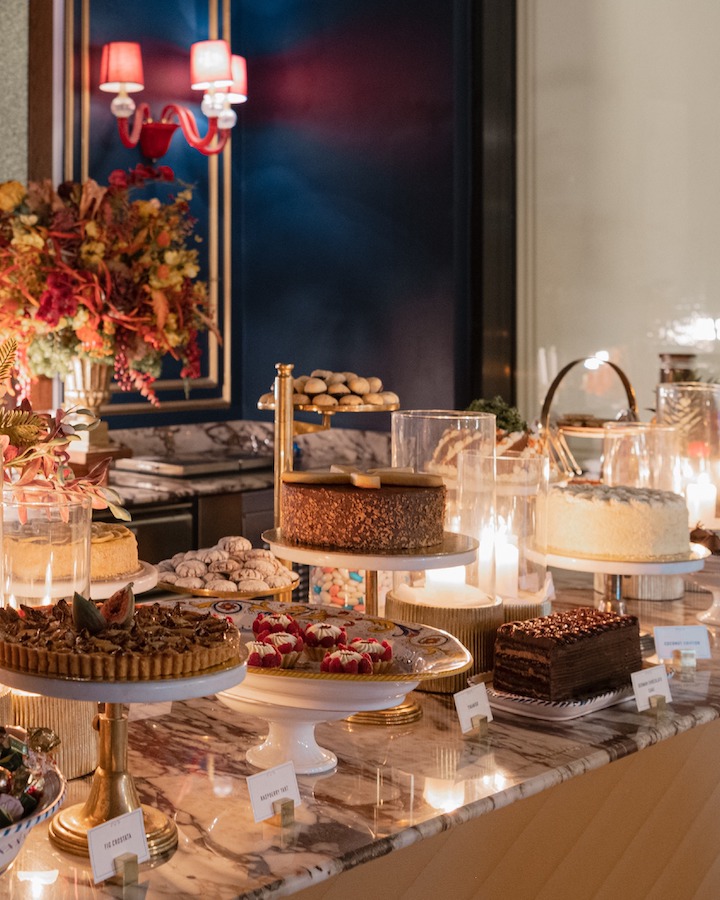
This trendy Italian restaurant brought a slice of New York’s dining scene to Saudi Arabia when it opened in the Mansard Riyadh last October following its rise to fame in the Big Apple. The original US branch of Carbone boasts an impressive celebrity clientele, with stars including Adele, Justin Bieber and Rihanna often spotted enjoying intimate dinners at its secluded tables. For iftar, the Riyadh restaurant’s set menu offers traditional Arabic coffee and desserts alongside contemporary Italian dishes such as chicken Massimo, funghi trifolati, spicy rigatoni and tortellini al ragu. While you might not spot quite as many A-list celebrities as you would in NYC, the top-notch staff are renowned for making you feel like a star yourself.
PRICE: From SAR400 ($107)
LOCATION: Prince Mohammed bin Salman bin Abdulaziz Road
CONTACT: +966 11 829 0919
Fairmont Riyadh
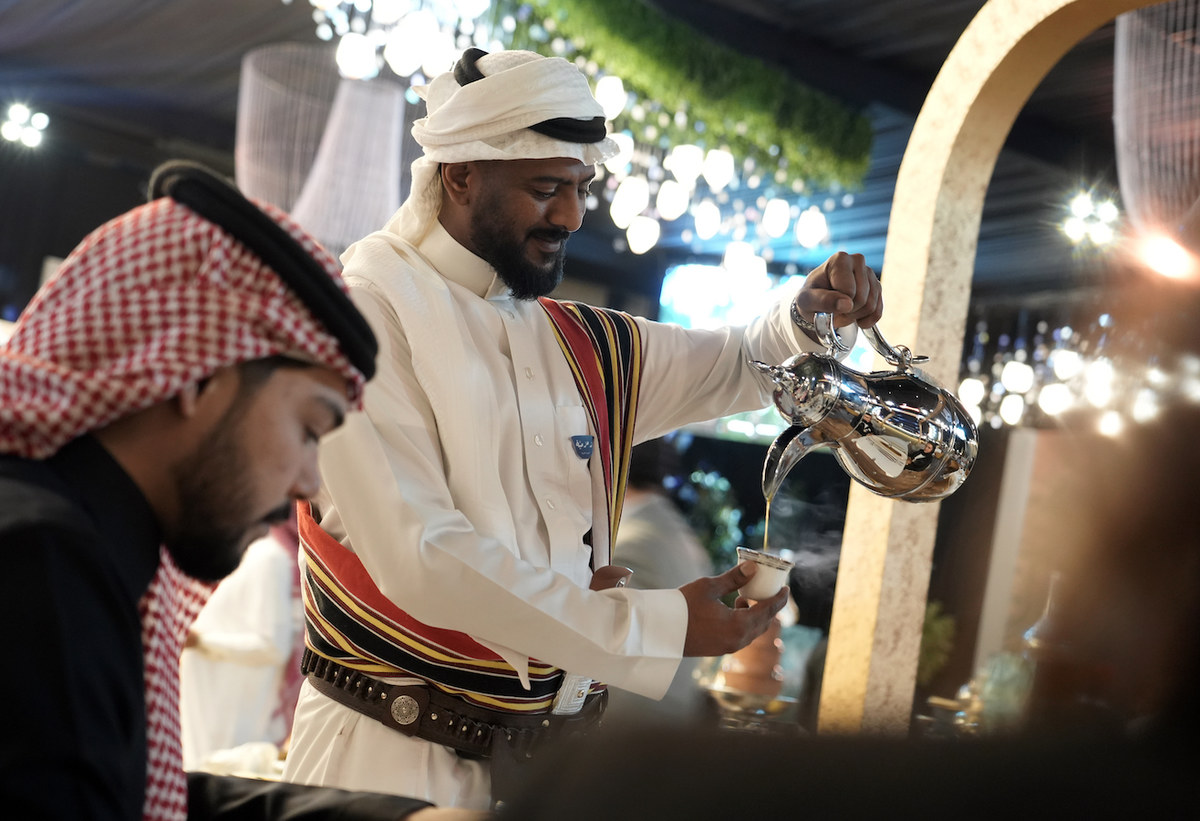
This five-star hotel near King Khalid International Airport is lighting up its Al-Thuraya and Al-Marasem ballrooms for Ramadan as part of the “Luminous Nights” series (inspired by “the desert’s golden tones”) in collaboration with Saudi immersive events expert Dr. Ali Madkhaly. The foyer has been transformed into a Ramadan bazaar featuring local haute couture, signature scents, specialty coffee roasters and traditional weaving. In addition to a buffet across the two ballrooms, and for an extra fee, up to 50 guests per night can enjoy a menu created by the chef Luigi Taglienti who runs the Michelin-starred LUME in Milan. Dishes on Taglienti’s menu include langoustine, white risotto, lobster, sea bass and lamb carpaccio.
PRICE: From SAR350
LOCATION: Business Gate, Qurtubah
CONTACT: +966 11 826 2629
Four Seasons Hotel
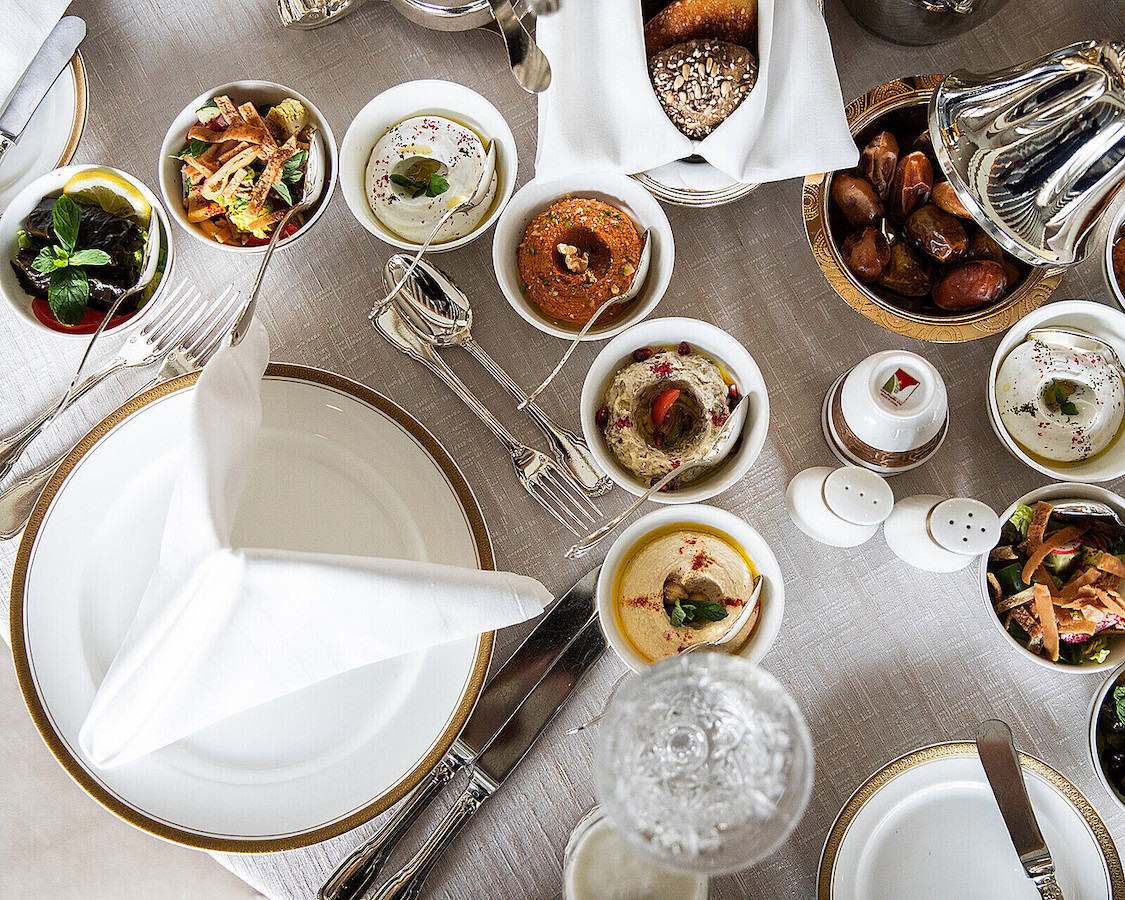
Step into the newly redesigned Ramadan Tent at the Four Seasons hotel in Riyadh’s iconic Kingdom Center for an iftar inspired by Arabian elegance, in a space featuring gold accents and traditional motifs. The buffet is spread across seven islands and live cooking stations, with signature mixed grills from the Josper charcoal oven served alongside poke sushi cups and artisanal sourdough pizza. For dessert, take your pick from a selection including ever-popular kunafa, creamy gelato, and a chocolate fountain. For an added touch of luxury, book the exclusive Chef's Table experience, complete with dedicated butler service and personalized dishes. The hotel also welcomes families; there is a special area for children, ensuring an enjoyable Ramadan experience for guests of all ages.
PRICE: From SAR285
LOCATION: Kingdom Center
CONTACT: +966 11 211 5000
Il Baretto
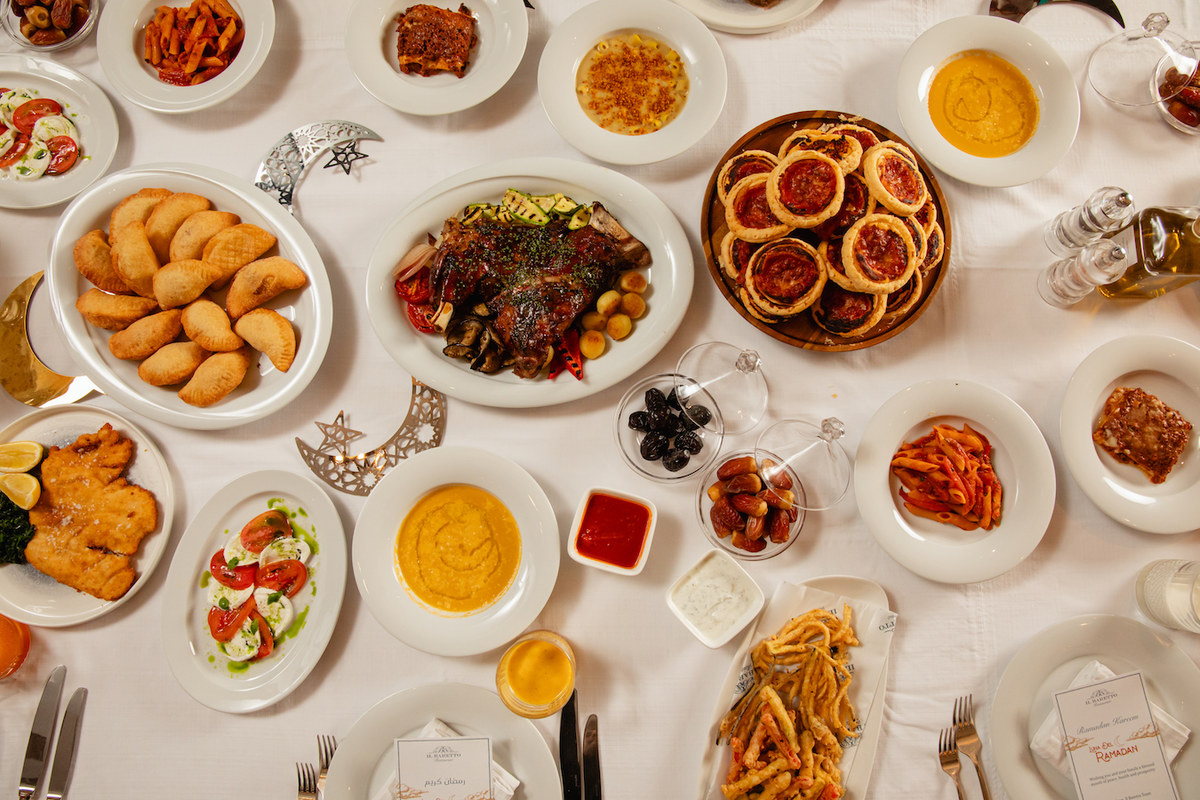
One of the first spots to open in the glitzy King Abdullah Financial District back in 2021, Il Baretto has become a mainstay of Riyadh’s fine-dining scene, with its elegant corniced dining room fully booked most evenings. For iftar, the restaurant is serving a special “Luna del Ramadan” set menu that pairs local favourites like mango laban mocktails with Italian classics including Caprese salad and spicy penne all’arrabbiata. For each of the first four courses, diners can select between an Arabic or Italian option, before a round of mini ice cream cones for dessert. For those looking to bring home their own slice of the Il Baretto experience, takeaway tiramisus are available from 5.30 p.m. each day until the end of Ramadan.
PRICE: SAR184
LOCATION: King Abdullah Financial District
CONTACT: +966 9200 12508
Mandarin Oriental Al-Faisaliah
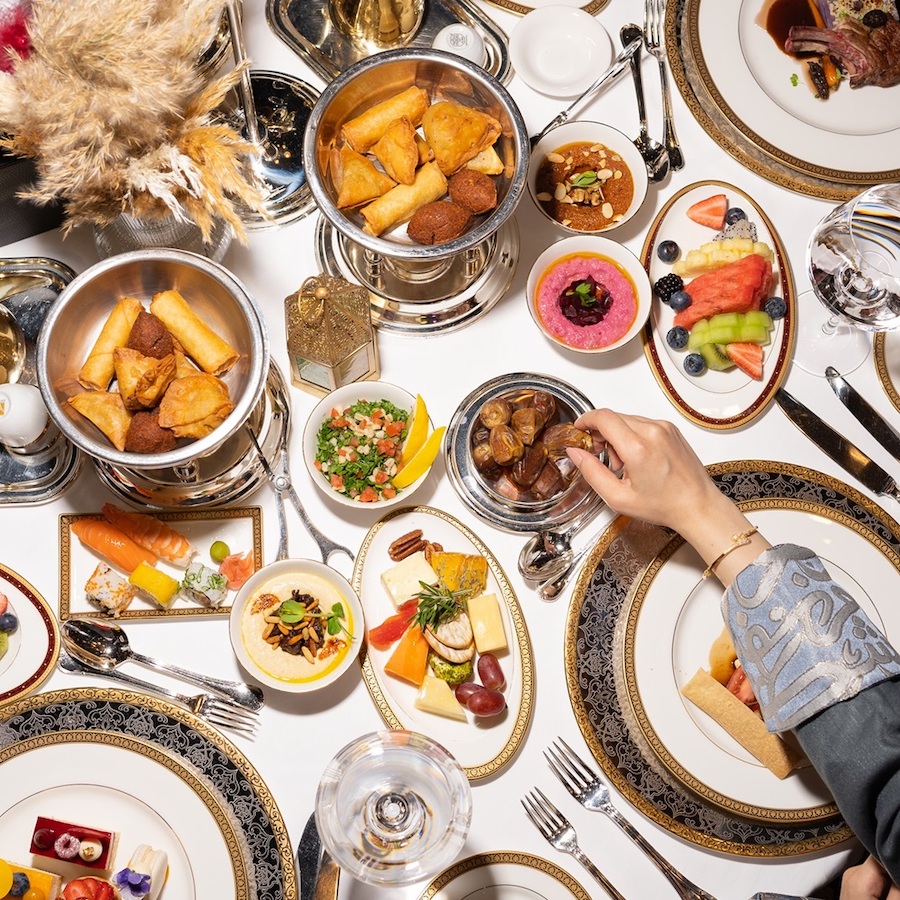
Set in a grand iftar tent that can host up to 1,800 guests, the “Fawanees Experience” serves up a lavish feast of classic Saudi cuisine alongside sweet Ramadan beverages like jellab, kamer el-dine, and tamer hindy. There is also a dedicated play area for children, with those under the age of seven dining for free. For an a la carte iftar with a view, take the elevator to Asir Lounge at The Globe — the golden orb at the top of Al-Faisaliah — which offers panoramic vistas of the city’s twinkling skyscrapers. Groups can book out a private space in the restaurant for up to 25 guests for SAR35,000.
PRICE: From SAR550
LOCATION: King Fahd Road, Al-Olaya
CONTACT: +966 11 273 2000
The Ritz-Carlton
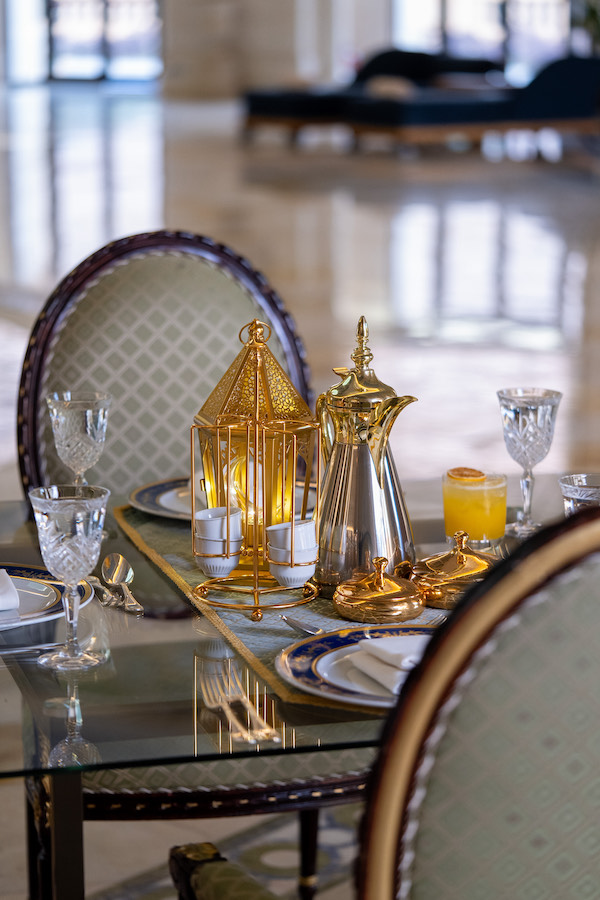
Beneath the dazzling chandeliers and ornate ceilings of one of the city’s most famous hotels, the iftar experience at The Ritz-Carlton, Riyadh never disappoints. Guests can choose from the grand ballroom or a more intimate setting beside the former palace’s indoor pool for a wide-ranging buffet selection drawing inspiration from across the Middle East and Asia. For a final indulgent flourish, finish the evening at the Palais des Délices patisserie, where homemade pastries, oriental sweets, premium coffee, tea selections and signature beverages inspired by local ingredients are served on a terrace that overlooks the hotel’s fountains and gardens.
PRICE: From SAR630
LOCATION: Makkah Al-Mukarramah Road, Al Hada
CONTACT: +966 11 802 8020


















